¿Pueblos indígenas S. A.? La cultura como política y propiedad en la bioprospección farmacéutica
DOI:
https://doi.org/10.22380/2539472X.1186Palabras clave:
indígenas aguaruna, movimiento indígena, propiedad intelectual, farmacéuticas, mercado, bioprospecciónResumen
El debate reciente sobre las reclamaciones indígenas acerca de la propiedad intelectual y cultural revela una serie de estrategias de movilización indígena que, simultáneamente, toman de y se mueven en contra de la lógica del mercado. A este respecto, son muy importantes varias estrategias indígenas usadas en las actividades de bioprospección actuales. Este artículo presenta datos de campo sobre un controvertido proyecto etnofarmacéutico entre los aguarunas peruanos, y un análisis comparativo sobre los resultados, prestando atención a varios casos en y por fuera de Sudamérica. Plantea preguntas sobre las formas de legitimar la autoridad dentro del creciente movimiento indígena, el papel de las ONG, los investigadores, las burocracias y las corporaciones en este proceso, y los dilemas que surgen de la politización y privatización de la cultura e identidad indígenas.
Descargas
Referencias bibliográficas
Aguilar-Støen, M., Dhillion, S. S. 2003. “Implementation of the Convention on Biodiversity in Mesoamerica: Environment and development aspects”. Environmental Conservation. 30. DOI: https://doi.org/10.1017/S0376892903000110
Albers-Schönberg, Georg. 1995. “The pharmaceutical discovery process”. En T. Swanson (ed.). Intellectual property rights and biodiversity conservation. Cambridge University Press. Cambridge. DOI: https://doi.org/10.1017/CBO9780511623417.005
Albó, Xavier. 1991. “El retorno del indio”. Revista Andina. 9.
Altman, Jon. 2001. Sustainable development options on aboriginal land: The hybrid economy in the twenty-first century. Australian National University Centre for Aboriginal Economic Policy. Research Discussion Paper 226.
Artuso, Anthony. 1997. “Capturing the chemical value of biodiversity: Economic perspectives and policy prescriptions”. En F. Grifo y J. Rosenthal (eds.). Biodiversity and human health. Island Press. Washington.
Aylward, BRuce. 1995. “The role of plant screening and plant supply in biodiversity conservation, drug development, and health care”. En T. Swanson (ed.). Intellectual property rights and biodiversity conservation. Cambridge University Press. Cambridge. DOI: https://doi.org/10.1017/CBO9780511623417.006
Ballón Aguirre, Francisco. 1988. Política de la supervivencia. Centro de Investigación y Promoción Amazónica. Temas Amazónicos 4.
Banerjee, S. B. 2000. “Whose land is it anyway? National interest, indigenous stakeholders, and colonial discourses: The case of the Jabiluka uranium mine”. Organization and Environment. 13 (1). DOI: https://doi.org/10.1177/1086026600131001
Bebbington, Anthony, Graham Thiele, PEnelope Davies, Martin Prager, Hernando Riveros. 1993. Non-governmental organizations and the state in Latin America. Routledge. Londres.
Berlin, Berlin, Alois Ann Berlin. 2002. “Comment on: Maya medicine in the biological gaze: Bioprospecting research as herbal fetishism, by Ronald Nigh”. Current Anthropology. 43 (3).
Boyle, James. 1996. Shamans, software, and spleens. Harvard University Press. Cambridge.
Brown, Michael. 2003. Who owns native culture? Harvard University Press. Cambridge.
––. 1998. “Can culture be copyrighted?”. Current Anthropology. 39 (2).
––. 1993. “Facing the state, facing the world: Amazonia’s native leaders and the new politics of identity”. L’Homme. 33.
Brush, Steven. 1999. “Bioprospecting the public domain”. Cultural Anthropology. 14. DOI: https://doi.org/10.1525/can.1999.14.4.535
––. 1996. “Whose knowledge, whose genes, whose rights?”. En S. Brush y D. Stabinsky (eds.). Valuing local knowledge. Island Press. Washington.
––. 1994. “A non-market approach to protecting biological resources”. En T. Greaves (ed.). Intellectual property rights for indigenous peoples. Society for Applied Anthropology. Norman, Okla.
Brysk, Alison. 2000. From tribal village to global village. Stanford University Press. Stanford.
Carneiro Da Cunha, Manuela y Mauro W. B de Almeida. 2000. “Indigenous people, traditional people, and conservation in the Amazon”. Daedalus. 129.
Castree, N. 2003. “Bioprospecting: From theory to practice (and back again)”. Transactions of the Institute of British Geographers. 28. DOI: https://doi.org/10.1111/1475-5661.00076
Chatterjee, PRATAP. 1997. “Environment: Peru native peoples’ stake in medicinal plant deal”. Inter Press Service, Global Information Network. March 6.
Chirif, Alberto, Pedro García, Richard Smith. 1991. El indígena y su territorio son uno solo. Oxfam-Coica. Lima.
Clark, John. 1990. Democratizing development: The role of voluntary organizations. Kumarian Press. West Hartford.
COICA (Coordinadora de las ORganizaciones Indígenas de la Cuenca Amazónica). 2002. Patente de la planta sagrada ayahuasca. http://www.coica.org/ interna.asp?sp5&rp10 (consultada el 30 de enero de 2003).
Comaroff, Jean Y John Comaroff. 1991. Of revelation and revolution. Vol. 1. University of Chicago Press. Chicago.
Conklin, Beth. 2002. “Shamans versus pirates in the Amazonian treasure chest”. American Anthropologist. 104. DOI: https://doi.org/10.1525/aa.2002.104.4.1050
Conklin, Beth y Laura Graham. 1995. “The shifting middle ground: Amazonian Indians and eco-politics”. American Anthropologist. 97. DOI: https://doi.org/10.1525/aa.1995.97.4.02a00120
Conseil, Dominique. 2003. “Aveda announces discontinuation of indigenous product Collection Aveda”. http://www.aveda.com/ about/press/indigenous.asp (consultada el 14 de noviembre de 2003).
Coombe, Rosemary. 1999. “Intellectual property, human rights, and sovereignty: New dilemmas in international law posed by the recognition of indigenous knowledge and the conservation of biodiversity”. Indiana Journal of Global Legal Studies. 6.
––. 1998. The cultural life of intellectual properties. Duke University Press. Durham.
Cox, Paul Y Michael Balick. 1994. “The ethnobotanical approach to drug discovery”. Scientific American. June. DOI: https://doi.org/10.1038/scientificamerican0694-82
Dhillion, S. S., H. Svarstad, C. Amundsen, H. C. Bugge. 2002. “Bioprospecting: Effects on the environment and development”. AMBIO. 31. DOI: https://doi.org/10.1579/0044-7447-31.6.491
Dove, Michael. 1995. “Center, periphery, and biodiversity: A paradox of governance and a developmental challenge”. En S. Brush y D. Stabinsky (eds.). Valuing local knowledge. Island Press. Washington.
Dye, Lee. 2000. “Cures from the forest”. http://www.abcnews.go.com/ sections/science/DyeHard/dyehard000824.html (consultada el 15 de agosto de 2003).
Economist. 1999. “Shaman loses its magic”. February 20.
Elisabetsky, Elizabeth. 1991. “Folklore, tradition, or know-how?”. Cultural Survival Quarterly. Summer.
Ewen, Alexander. 1994. Voice of indigenous peoples: Native people address the United Nations. Clear Light Publishers. Santa Fe.
Farnsworth, Norman. 1990. “The role of ethnopharmacology in drug development”. En Bioactive compounds from plants. Ciba Foundation Symposium 154. Wiley. Chichester.
Fischer, Edward. 1999. “Cultural logic and Maya identity: Rethinking constructivism and essentialism”. Current Anthropology. 40. DOI: https://doi.org/10.1086/200046
Friedman, Jonathan. 1999. “Indigenous struggles and the discreet charm of the bourgeoisie”. Australian Journal of Anthropology. 10 (1). DOI: https://doi.org/10.1111/j.1835-9310.1999.tb00009.x
Gale, Dennis. 2001. “Company settles suit over Crazy Horse Malt Liquor”. Montana Forum. http://www.montanaforum.com/ rednews/2001/04/27/build/tribal/27liquorsuit.php?nnnp3 (consultada el 20 de enero de 2003).
Gersh, Jeff. 1999. “Capitalism goes green?” San Diego Earth Times. May. http://www.sdearthtimes.com/et0599/et0599s3.html (consultada el 3 de octubre de 2003).
Goering, Laurie. 1995. “Rain forests may offer new miracle drugs”. Chicago Tribune. September 12.
Graham, Laura. 2002. “How should an Indian speak?”. En K. Warren y J. Jackson (eds.). Indigenous movements, self-representation, and the State in Latin America. University of Texas. Austin.
Greene, Shane. 2002. “Intellectual property, resources or territory? Reframing the debate over indigenous rights, traditional knowledge, and pharmaceutical bioprospection”. En M. Bradley y P. Petro (eds.). Truth claims: Representation and human rights. Rutgers University Press. New Brunswick.
Gupta, Akhil Y James Ferguson. 1992. “Beyond “culture”: Space, identity, and the politics of difference”. Cultural Anthropology. 7.
Haas, Jonathan. 1996. “Power, objects, and a voice for anthropology”. Current Anthropology. 37.
Handler, Richard. 1985. “On having a culture”. En George Stocking (ed.). Objects and others. Historical Anthropology. 3. University of Wisconsin Press. Madison.
Hardt, Michael Y Antonio Negri. 2000. Empire. Harvard University Press. Cambridge.
Hayden, Cori. 2003. “From market to market: Bioprospecting’s idioms of inclusion”. American Ethnologist. 30 (3). DOI: https://doi.org/10.1525/ae.2003.30.3.359
––. n. d. “Prospecting’s publics”. En K. Verdery y C. Humphrey (eds.). Property in question. Berg. In Press. Oxford.
Heller, M. A. Y R. S. Eisenberg. 1998. “Can patents deter innovation? The anticommons in biomedical research”. Science. 280. DOI: https://doi.org/10.1126/science.280.5364.698
Kearney, Michael Y Stefano Varese. 1995. “Latin America’s indigenous peoples: Changing identities and forms of resistance”. En S. Halebsky y R. Harris (eds.). Capital, power, and inequality in Latin America. Westview Press. Boulder.
King, Steven Y Michael Tempesta. 1994. “From shaman to human clinical trials”. En D. Chadwick y J. Marsh (eds.). Ethnobotany and the search for new drugs. Ciba Foundation Symposium 185. Wiley. Chichester.
Lambrecht, BILL. 1998. “Bioprospectors find they must be deal-makers as well as scientists”. St. Louis Post-Dispatch. October 11.
Lewis, Walter, Gerardo Lamas, Abraham Vais-Berg, David Corley Y César Sarasara. 1999. “Peruvian medicinal plant sources of new pharmaceuticals (International Cooperative Biodiversity GroupPeru)”. Pharmaceutical Biology. Suppl. 37. DOI: https://doi.org/10.1076/1388-0209(200010)37:SUP;1-W;FT069
Lewis, Walter Y Veena Ramani. n. d. “Ethics and practice in ethnobiology: Analysis of the International Cooperative Biodiversity Group Project in Peru”. MS.
Macilwain, Colin. 1998. “When rhetoric hits reality in debate on bioprospecting”. Nature. 392. DOI: https://doi.org/10.1038/33237
Meyer, Carrie. 1999. The economics and politics of NGOs in Latin America. Praeger. Westport.
Monsanto. 1998. 1997 report on sustainable development. St. Louis.
Montejo, Victor. 2002. “The multiplicity of Mayan voices: Mayan leadership and the politics of self-representation”. En K. Warren y J. Jackson (eds.). Indigenous movements, self-representation, and the State in Latin America. University of Texas. Austin.
Moran, Katy, Steven King, Thomas Carlson. 2001. “Biodiversity prospecting: Lessons and prospects”. Annual Review of Anthropology. 30. DOI: https://doi.org/10.1146/annurev.anthro.30.1.505
Muehlebach, Andrea. 2001. “Making place” at the United Nations: Indigenous cultural politics at the U.N. Working Group on Indigenous Populations”. Cultural Anthropology. 16. DOI: https://doi.org/10.1525/can.2001.16.3.415
Niezen, Ronald. 2003. The origins of indigenism. University of California Press. Berkeley.
Nigh, Ronald. 2002. “Maya medicine in the biological gaze: Bioprospecting research as herbal fetishism”. Current Anthropology. 43 (3). DOI: https://doi.org/10.1086/339745
O’conner, Tanya. 2000. “Interest drops in rainforest remedies”. Health24News 1. July 7.
Orlove, BEnjamin, Brush, Stephen. 1996. “Anthropology and the conservation of biodiversity”. Annual Review of Anthropology. 25. DOI: https://doi.org/10.1146/annurev.anthro.25.1.329
Osuri, Goldie. 2003. “Discourses of aboriginality and governmentality in Australian television news”. MS.
Petras, James. 1997. “Imperialism and NGOs in Latin America”. Monthly Review. 49 (7). DOI: https://doi.org/10.14452/MR-049-07-1997-11_2
Plotkin, Mark. 1993. Tales of a shaman’s apprentice. Viking. Nueva York.
Pollack, Andrew. 1992. “Drug industry going back to nature”. New York Times. March 5.
Posey, Darrell. 1990. “Intellectual property rights: What is the position of ethnobiology?”. Journal of Ethnobiology. 10.
Posey, Darrell, Dutfield, Graham. 1996. Beyond intellectual property. International Development Research Centre. Ottawa.
Public Citizen. 2001. “Rx R&D myths: The case against the drug industry’s R&D “scare card””. http://www.citizen.org (consultada el 1 de agosto de 2001).
RAFI (RURAL ADVANCEMENT FOUNDATION INTERNATIONAL). 2000. “Stop biopiracy in Mexico!” Rafi News. October 23. http://www.etcgroup.org/ article.asp?newsidp18 (consultada el 9 de febrero de 2003).
––. 1995. “Biopiracy update: A global pandemic”. Rafi Communiqué, September/October. http://www.etcgroup.org/ article.asp?newsidp206 (consultada el 9 de enero de 2003).
––. 1994. “Bioprospecting/biopiracy and indigenous peoples”. Rafi Communiqué, November. http://www.etcgroup.org/ article.asp?newsidp212 (consultada el 9 de enero de 2003).
Raghavan, Chakravarthi. 2000. “Neem patent revoked by European Patent Office”. http://www.twnside.org.sg/title/revoked.htm (consultada el 28 de enero de 2003).
Ramos, Alcida. 1998. Indigenism: Ethnic politics in Brazil. University of Wisconsin Press. Madison.
Rasnake, Roger. 1988. Domination and cultural resistance. Duke University Press. Durham.
Rausser, G. C. Y A. A. Small. 2000. “Valuing research leads: Bioprospecting and the conservation of genetic resources”. Journal of Political Economy. 108. DOI: https://doi.org/10.2139/ssrn.200528
Redford, Kent. 1990. “The ecologically noble savage”. Orion Nature Quarterly. 9 (3).
REPORT OF A SPECIAL PANEL OF EXPERTS ON THE INTERNATIONAL COOPERATIVE BIODIVERSITY GROUP. 1997. http://www.nih.gov/fic/opportu- nities/ finalreport.html (consultada el 12 de febrero de 2001).
REQUEST FOR APPLICATIONS ICBG. 1997. International Cooperative Biodiversity Group RFA TW-98-001, August 15. National Institutes of Health, National Science Foundation, Foreign Agricultural Service.
Rosenthal, Joshua. 1997. “Integrating drug discovery, bio-diversity conservation, and economic development: Early lessons from the International Cooperative Biodiversity Groups”. En F. Grifo y J. Rosenthal (eds.). Biodiversity and human health. Island Press. Washington.
Shiva, Vandana. 2000. “The neem tree: A case history of biopiracy”. http://www.twnside.org.sg/title/pir-ch.htm (consultada el 28 de enero de 2003).
Smith, Claire, Graeme Ward. 2000. Indigenous cultures in an interconnected world. Allen and Unwin. St. Leonards, Australia.
Smith, Richard Chase. 1996. “Las políticas de la diversidad: Coica y las federaciones étnicas de la Amazonia”. En S. Varese (ed.). Pueblos indios, soberanía y globalismo. Abya-Yala. Quito.
Soejarto, Djaja, Charlotte Gyllenhaa, Jacinto Regalado et al. 1999. “Studies on biodiversity of Vietnam and Laos: The UIC-Based ICBG Program”. Pharmaceutical Biology. Suppl. 37. DOI: https://doi.org/10.1076/1388-0209(200010)37:SUP;1-W;FT100
Stern, Steve. 1982. Peru’s Indian peoples and the challenge of Spanish conquest. University of Wisconsin Press. Madison.
Stoll, David. 1999. Rigoberta Menchú and the story of all poor Guatemalans. Westview Press. Boulder.
Strathern, Marilyn. 1996. “Potential property: Intellectual rights and property in persons”. Social Anthropology. 4 (1). DOI: https://doi.org/10.1111/j.1469-8676.1996.tb00311.x
Svarstad, H. Y S. S. Dhillion (eds.). 2000. Responding to bioprospecting: From biodiversity in the South to medicines in the North. Spartacus Press. Oslo.
Sylvain, Renée. 2002. ““Land, water, and truth”: San identity and global indigenism”. American Anthropologist. 104.
Tierney, Patrick. 2000. Darkness in El Dorado. Norton. Nueva York.
Timmerman, Barbara, Wachter, Gerald, Valcic, Susanne et al. 1999. “The Latin American ICBG: The first five years”. Pharmaceutical Biology. Suppl. 37. DOI: https://doi.org/10.1076/1388-0209(200010)37:SUP;1-W;FT035
Tobin, Brendan. 1999a. “Know-how licenses: The Peruvian ICBG project and protection of indigenous collective property rights”. Documento presentado en el Seminario internacional de conocimientos tradicionales y recursos genéticos: una oportunidad en el mercado global. Lima, 19-21 de mayo.
––. 1999b. “Protegiendo los derechos de propiedad colectiva: la búsqueda de una solución provisional”. En Pablo Ortiz (ed.). Comunidades y conflictos socioambientales. Abya-Yala. Quito.
––. 1994. “Putting the commercial cart before the cultural horse”. Documento escrito para la Sociedad Peruana de Derecho Ambiental (SPDA). MS.
––. n. d. “Putting the commercial cart before the cultural horse: Part 2”. MS.
Turner, Terence. 1993. “The role of indigenous peoples in the environmental crisis: The example of the Kayapo´ of the Brazilian Amazon”. Perspectives in Biology and Medicine. 36. DOI: https://doi.org/10.1353/pbm.1993.0027
Urban, Greg Y Joel Sherzer. 1991. Nation-states and Indians in Latin America. University of Texas Press. Austin.
Van Cott, Donna Lee. 1994. Indigenous peoples and democracy in Latin America. St. Martin’s Press. Nueva York.
Warren, Kay. 1998. Indigenous movements and their critics. Princeton University Press. Princeton.
Warren, Kay, Jean Jackson. 2002. Indigenous movements, selfrepresentation, and the State in Latin America. University of Texas Press. Austin.
Wendland, W. B. 2002. “Intellectual property, traditional knowledge, and folklore: WIPO’s exploratory program”. International Review of Industrial Property and Copyright Law. 33.
Wiser, Glenn. 2001. “U.S. Patent and Trademark Office rein states ayahuasca patent”. http://www.ciel.org/publications/ptodecisionanalysis.pdf (consultada el 15 de diciembre de 2002).
Wolf, Eric. 1956. “Aspects of group relations in a complex society: Mexico”. American Anthropologist. 58. DOI: https://doi.org/10.1525/aa.1956.58.6.02a00070
Wolfe, Patrick. 1999. Settler colonialism and the transformation of anthropology: The politics and poetics of an ethnographic event. Cassell. Londres.




















